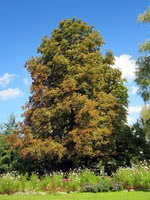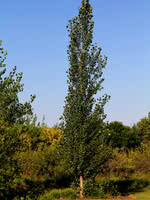Mon-Fri 9am - 5pm Mountain time
Horse Chestnut vs Sundancer Poplar
Aesculus hippocastanum
Populus x ACWS151
CUSTOM GROW
Horse Chestnut is a medium sized deciduous tree that is native to Greece but has been grown in North America for hundreds of years. It produces large nuts.
A top CO2 absorbing species. Experts think this tree may help climate change more than others.
The Sundancer Poplar is a fast-growing, columnar hybrid that is resistant to Bronze Leaf Disease. Developed at the Agroforestry Centre in Indian Head, Saskatchewan, this cold hardy tree is well-suited to the Canadian prairies and northern regions.
Adaptable to various soil conditions and drought-tolerant once established, the Sundancer Poplar is an excellent choice for lining properties and roads or creating an attractive hedge.
Horse Chestnut Quick Facts
Sundancer Poplar Quick Facts
Toxicity: most parts of plant are toxic

